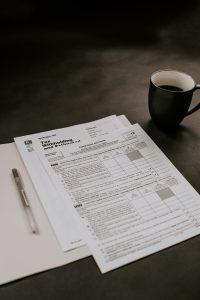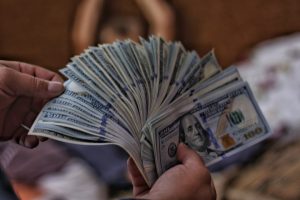Moving averages are one of the most widely used technical indicators in forex trading. They are simple and effective tools that help traders identify trends and potential price reversals. In this article, we will discuss how to use moving averages in forex trading.
Moving averages (MA) are a popular technical indicator that shows the average price of a currency pair over a specific period. Simply put, it smoothes out the volatility in the price movement of a currency pair by calculating the average price of a currency pair over a given period.
There are two types of moving averages: Simple Moving Average (SMA) and Exponential Moving Average (EMA). SMA calculates the average price by adding up the closing prices of a currency pair over a specific period and then dividing it by the number of periods. EMA, on the other hand, gives more weight to recent prices, and the formula is more complex than SMA.
Traders use moving averages in different ways, but the most common uses are identifying trends, determining support and resistance levels, and generating trading signals.
Identifying Trends:
Moving averages are excellent tools for identifying trends in the forex market. Traders use different periods of moving averages to identify short-term, medium-term, and long-term trends. A common strategy is to use a combination of short-term and long-term moving averages. For example, a trader may use a 50-day and 200-day moving average. When the 50-day moving average crosses above the 200-day moving average, it is considered a bullish signal, indicating that the currency pair is in an uptrend. Conversely, when the 50-day moving average crosses below the 200-day moving average, it is considered a bearish signal, indicating that the currency pair is in a downtrend.
Determining Support and Resistance Levels:
Moving averages can also be used to determine support and resistance levels. A support level is a price level where the currency pair tends to find buying interest, while a resistance level is a price level where the currency pair tends to find selling pressure. Traders use moving averages to identify these levels by observing how the price reacts when it approaches a moving average. If the price bounces off a moving average several times, it is considered a support or resistance level.
Generating Trading Signals:
Moving averages can also be used to generate trading signals. Traders use a variety of strategies to generate trading signals, but one of the most common is the crossover strategy. This strategy involves using two moving averages, one short-term and one long-term. When the short-term moving average crosses above the long-term moving average, it is considered a buy signal, indicating that the currency pair is likely to continue in an uptrend. Conversely, when the short-term moving average crosses below the long-term moving average, it is considered a sell signal, indicating that the currency pair is likely to continue in a downtrend.
In conclusion, moving averages are a simple yet effective tool that traders use to identify trends, determine support and resistance levels, and generate trading signals. While moving averages can be used on their own, they are most effective when used in combination with other technical indicators and fundamental analysis. As with any technical indicator, it is essential to understand the strengths and weaknesses of moving averages and to use them in conjunction with sound money management principles.






